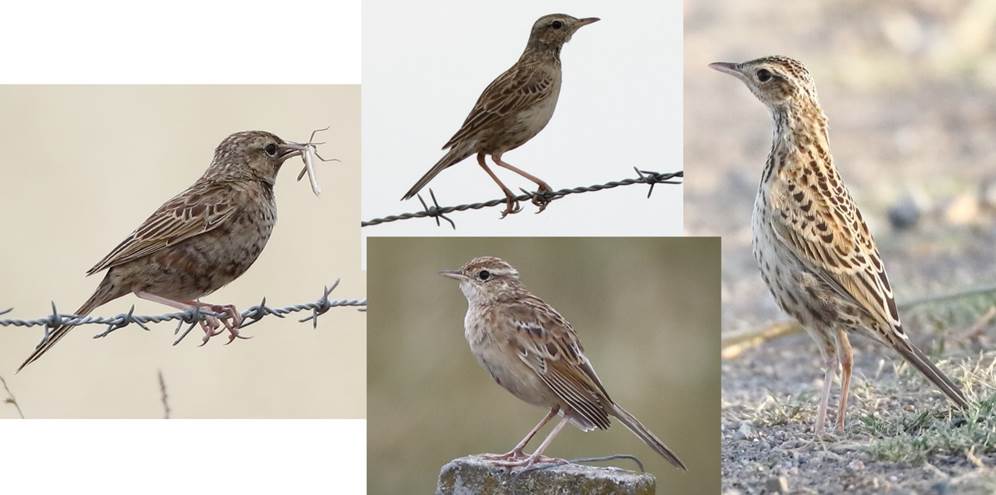I have made 11 visits to this site, beginning on 14 January. While the occasional raptor sighting is of interest to some, to me these are not particularly unusual given the expansive vistas and the nature of the terrain.
My interest has been in the grassland birds, here in exceptional numbers because of widespread drought conditions. Of particular interest is the number of Horsfield’s Bushlarks, an uncommon bird around Canberra, and clearly breeding at the site. The number
of bushlarks to be seen, with such close views, offers a spectrum of plumage stages, from plain worn-plumage birds to remarkably bright ones, with a few young birds.
A more common local species is the skylark, to be found at several spots around Canberra, but providing a steady background noise at the site with incessant song-flighting (becoming less frequent in the last few days,
I think). When perched on a wire it shows its ridiculously long hind-claw. According to one book: ‘almost certainly an adaptation to a cursorial existence, [but] its exact function is uncertain’. There you are then.
Then there are the conspicuous Brown Songlarks, with their loud skritchy-skratchy song.
 Apart from the song-flighting they let you know they are there by sitting on fence-posts with that brazen I AM SONGLARK pose.
More difficult to find are examples of plumages other than the breeding male, but over several visits I have accumulated images of what might be about ten different non-BM individuals, mainly juveniles. Some of these have boldly striped underparts that bear
no relation to any field guide illustration. I wonder whether the different plumages of this species are well understood. Certainly there is quite a degree of inconsistency in the books.
Apart from the song-flighting they let you know they are there by sitting on fence-posts with that brazen I AM SONGLARK pose.
More difficult to find are examples of plumages other than the breeding male, but over several visits I have accumulated images of what might be about ten different non-BM individuals, mainly juveniles. Some of these have boldly striped underparts that bear
no relation to any field guide illustration. I wonder whether the different plumages of this species are well understood. Certainly there is quite a degree of inconsistency in the books.
And the pipits. We all know the ‘typical pipit’, but there are some little chaps along Parkwood Road that would test the most experienced pipitologist. Without starting on the problems of bill, claw etc, I offer the
below assortment from my ‘query species’ folder to see what you think.
I might add that I found a Rufous Songlark out there, to complete the grassland suite.
I do not have space here to start on the bird counters and bird photographers. Also seasonally abundant.


